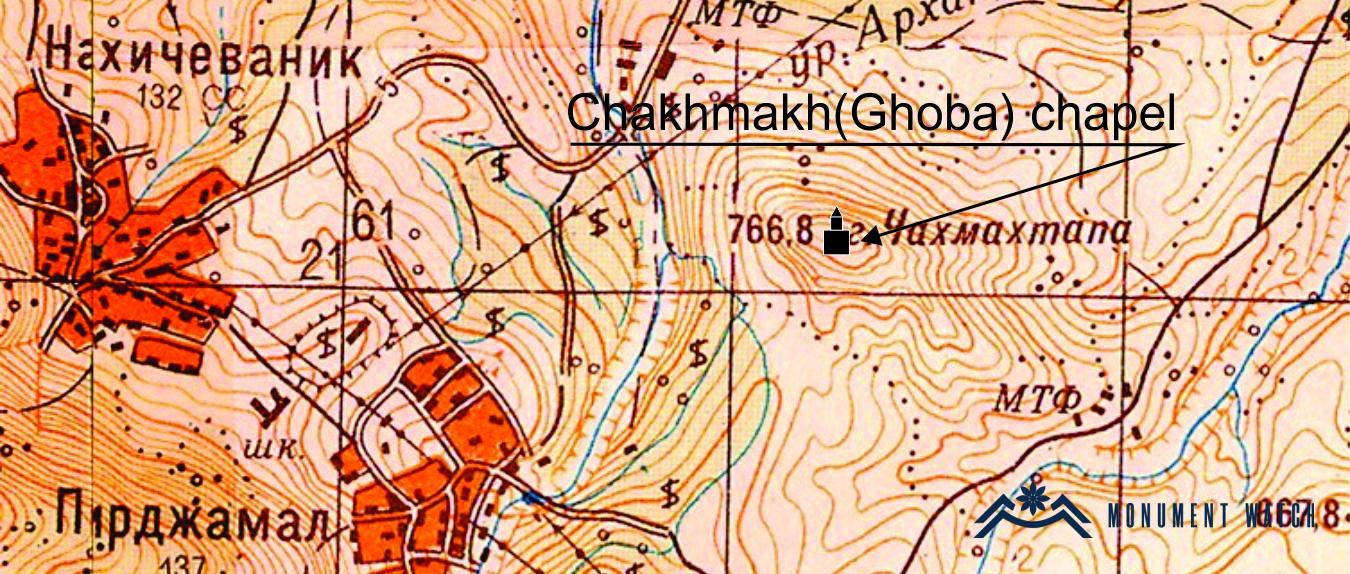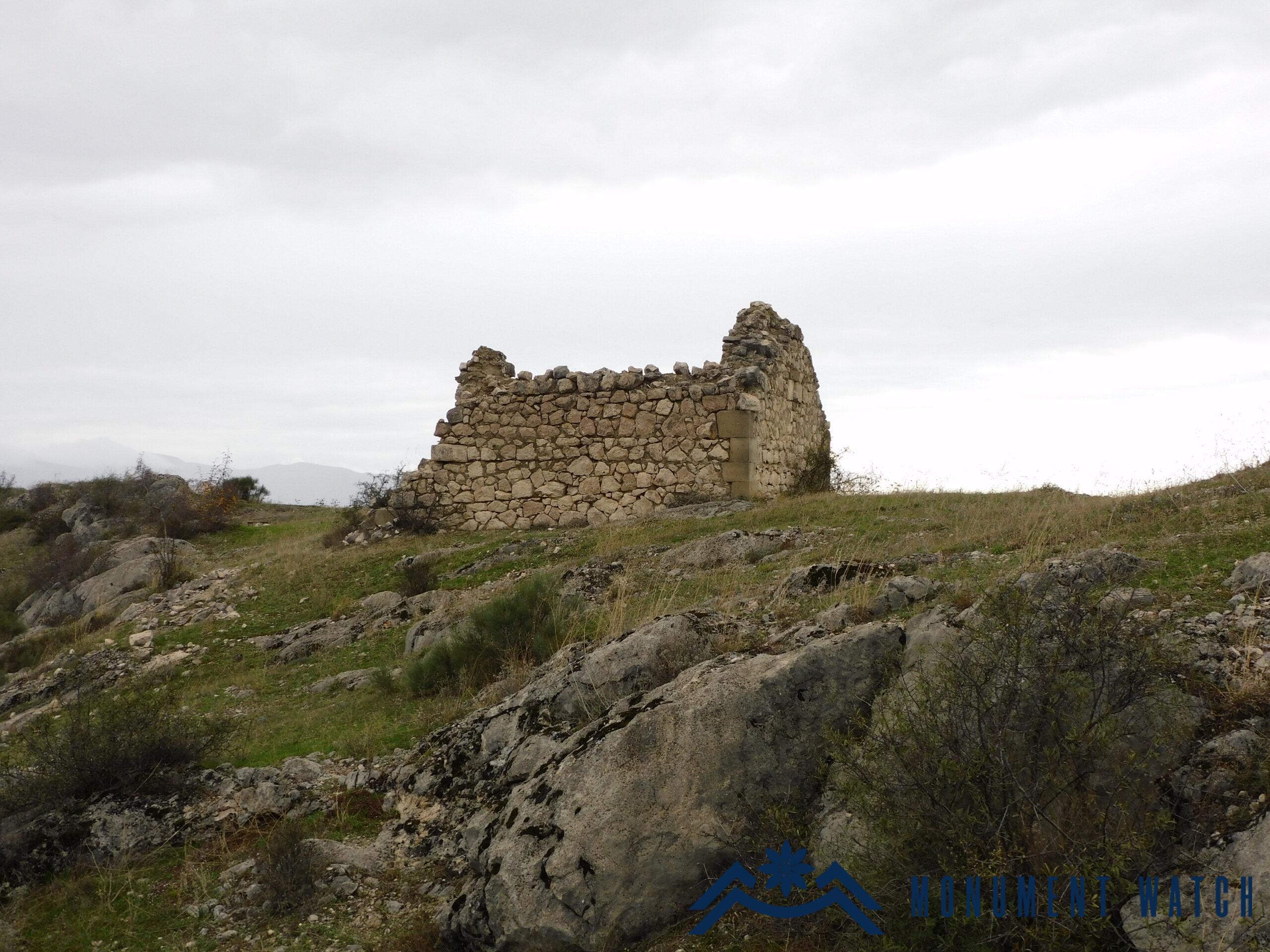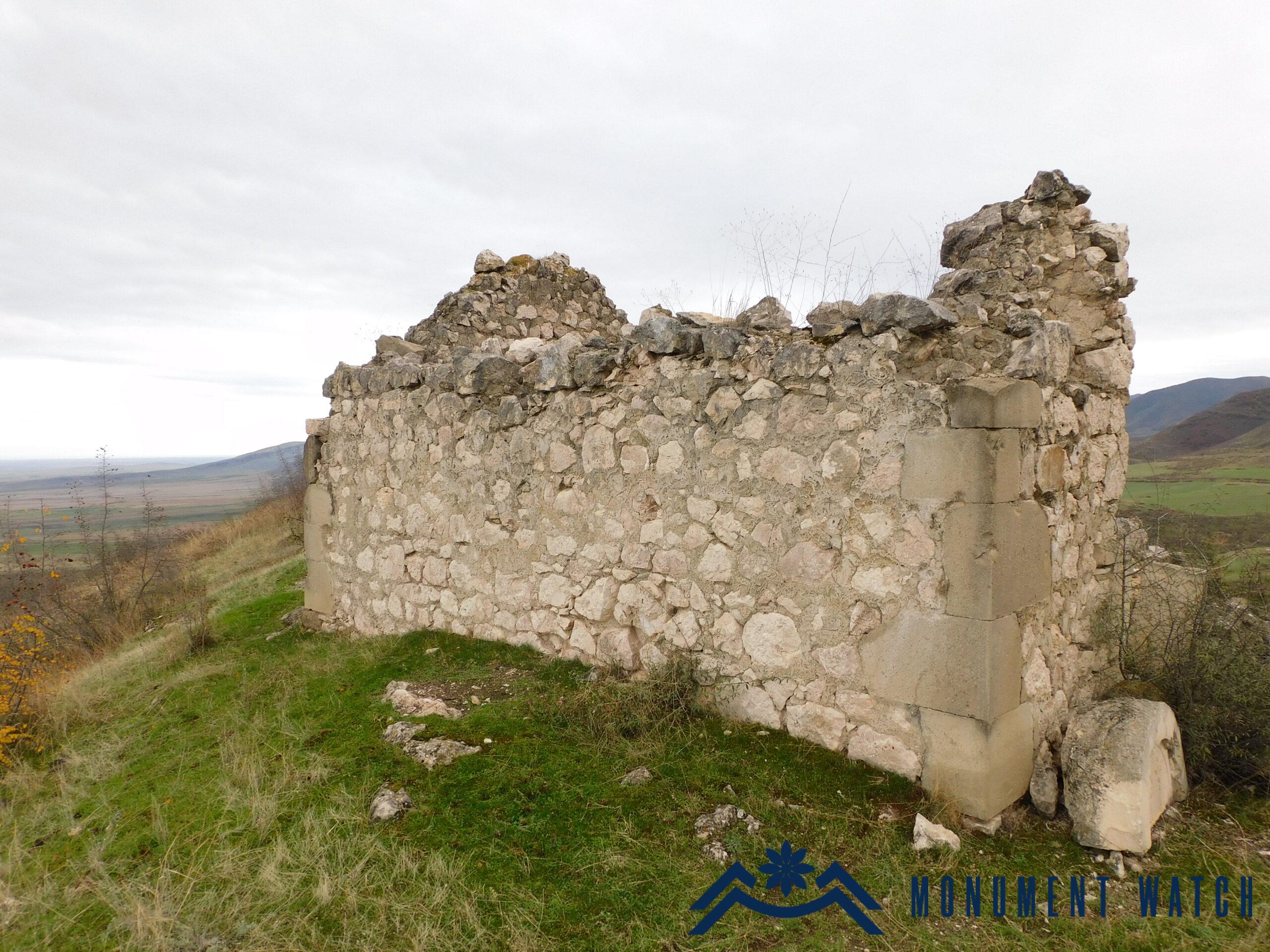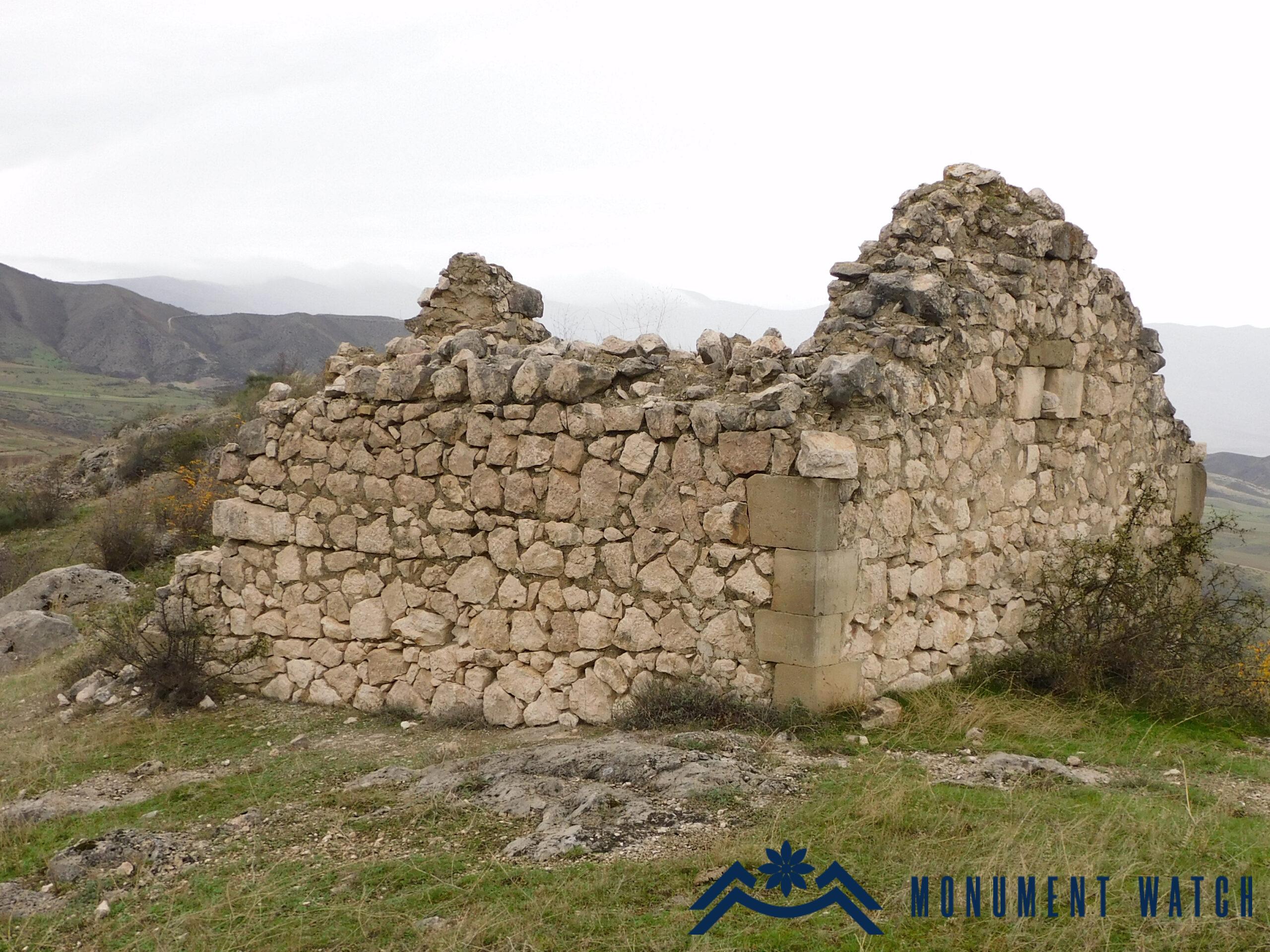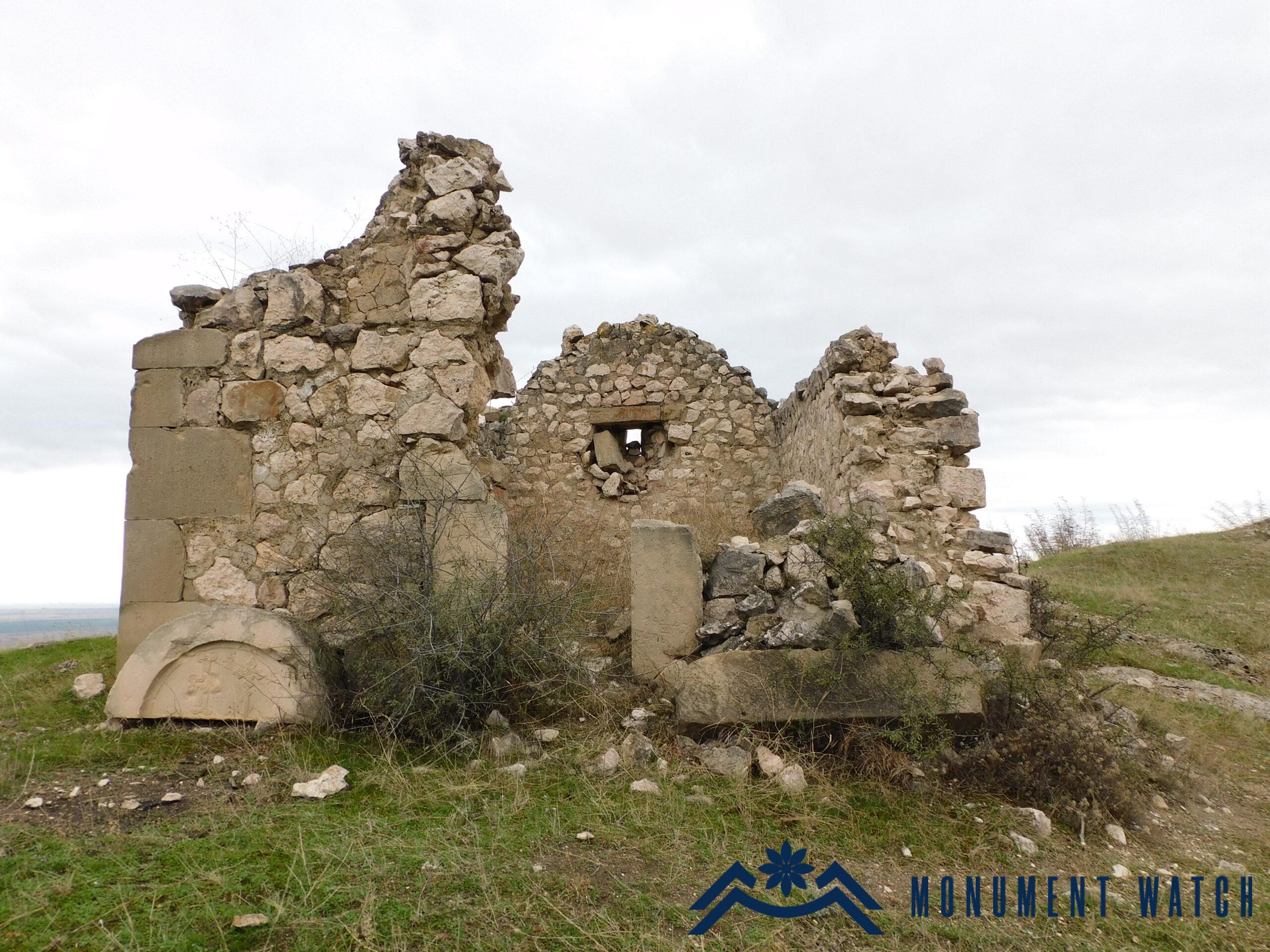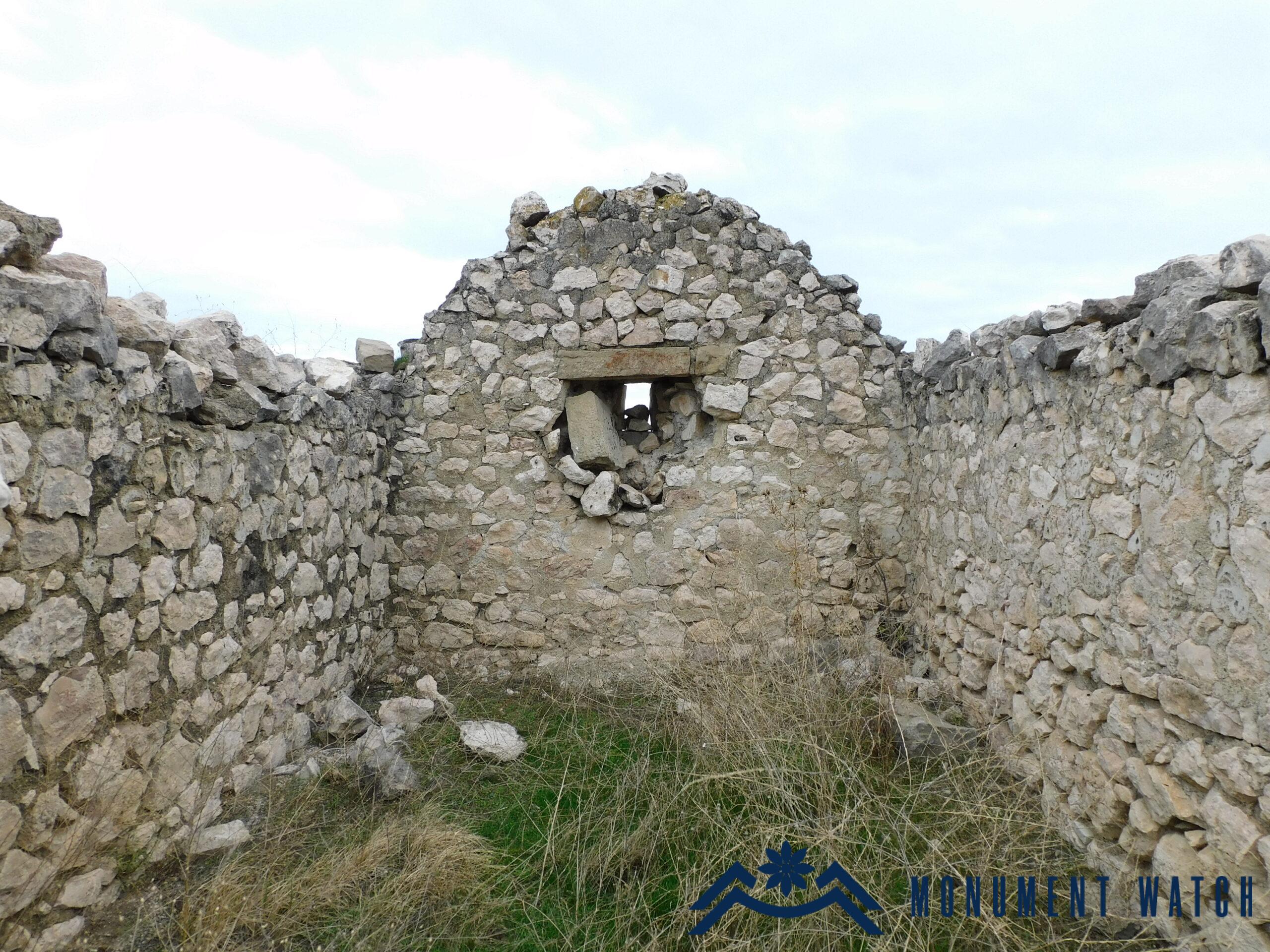The Chapel of Chakhmakh
Location
The Chakhmakh (Ghoba) chapel is situated atop the hill of the same name, isolated in the fields, approximately 950 meters northeast of the village of Vardadzor in the Askeran region of the Republic of Artsakh (Fig. 1).
Historical overview
Historical references about the chapel are scarce, but it is believed that the existing chapel building dates back to the early 19th century. This site is mentioned as a place of pilgrimage known as "Ghoba" in Makar Barkhudaryants' work "Artsakh," specifically in the section dedicated to the village of Vardadzor (Pir-Chamal). He claims that it comprises of two chapels. “In the vicinity of this village, there exists a pilgrimage site bearing the same name. Here, two small chapels stand, within which, according to legend, rest the bodies of the martyrs Pir and Chamal. As a result, this pilgrimage destination holds reverence not only among Armenians but also among Muslims” (Barkhutareants 1895, 128).
Barkhudaryants also records that, according to legend, the sister of Pir and Chamal is interred at the shrine of Nahatakuhi, situated to the north of the adjacent village of Nakhijevanik. This shrine, known as the Shrine of Martyrs, is currently operational and has undergone reconstruction (Barkhudaryants 1895, 129).
It is worth noting that this sacred site was not only a renowned place of pilgrimage in the 19th century but also continued to draw hundreds of pilgrims during the Soviet Union's existence. This is further substantiated by the inscriptions and records found on the walls.
Architectural-compositional examination
It is a single-nave hall with a rectangular layout, constructed using local coarse limestone and lime mortar. The only parts that feature polished stones are the cornerstones (Figs. 2, 3), the threshold stone and lintel of the entrance, and the parapets of the eastern window.
The vault of the chapel has not been preserved. It used to be illuminated by a small rectangular window situated on the eastern side (Fig. 4). The chapel features an eastern rectangular tabernacle, which is not separated from the main hall in any manner (Fig. 5).
The sole adorned section of the chapel is the western facade, housing the entrance. The cornerstones flanking the entrance are chamfered and notably larger in size. Additionally, the arched lintel of the entrance boasts sculpted crosses. On the western facade, near the southern cornerstone of the entrance, there exists a memorial inscription attributed to an individual named Samuel, who made a pilgrimage here in 1943 (Fig. 6).
The condition before, during, and after the war
The chapel suffered significant damage from 1990 to 1993 due to Azerbaijani shelling. While most of the walls have been retained at their original height, there is notable damage to the western section. The vault of the chapel also collapsed. It's important to note that the monument did not sustain damage during the 2020 war. Following the cessation of hostilities, the monument is now located near the border and is visible from Azerbaijani positions.
Bibliography
- Barkhutareants 1895 - Barkhutareants M., Artsakh, Baku.
Askeran region
Artsakh
